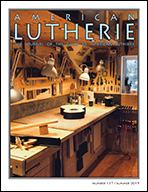|
||||
|
||||
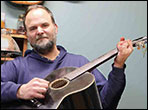 |
Meet the Maker: Todd Cambio by Federico Sheppard Federico has traveled the world to bring us news of excellent and unusual luthiers and their work. This time he journeyed from Green Bay, Wisconson all the way to Madison, Wisconsin to meet a guy who keeps his work on the cutting edge of innovation by closely following the century-old work of American guitar factories, and Italian-American luthiers who worked in New York City before WWI. A word to the wise: Tulip poplar is not, and never shall be, banned by CITES or the Lacey Act. |
|||
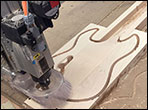 |
CNC Routers for Luthiers by Mark French CNC Routers are kinda like computers. Once they were huge and cost more than a house. Therefore they were mostly in the domain of large corporations. Now they are far smaller, and the price tag is closer to a few months’ rent. Therefore they will be ubiquitous. This article lets you know what it would take to get on the bus. |
|||
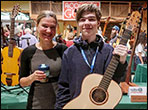 |
Let’s Catch Up with Joshia de Jonge by Cyndy Burton Joshia de Jonge was a sensation at the 1998 GAL Convention when, as a young female luthier, she brought a nicely made and fine-sounding instrument to the classical guitar listening session. It helped to have grown up in a guitar-making family. And now that she has left her parents’ home and shop, she is raising guitar-making sons. We also see her method of building an elevated neck with a sophisticated geometry to let the bridge height be constant across its width while the low strings have the necessary clearance over the frets. |
|||
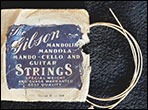 |
Delving Into the Vagaries and Mysteries of Early Gibson Guitar Strings By Way of the Harp Guitar |
|||
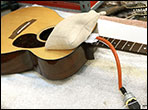 |
Dovetailed Neck Reset by Todd Mylet As a repairman in a busy guitar shop, Todd Mylet has a lot of Martin-style neck resets under his belt. There is a lot involved in doing it right. Todd presents a detailed account of his well-considered and time-tested method. |
|||
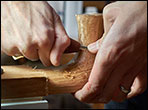 |
The Totnes School of Guitar Making by J.A.T. Stanfield
There are many settings in which one might receive lutherie instruction these days. Looking for a change of scene? This article describes a 12-week course held in a 300-year-old building near the Devonshire coast of southeast England. It has a 40-year history and roots in the legendary London College of Furniture program. |
|||
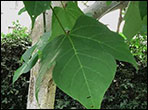 |
Savart Journal: Recent Research by R.M. Mottola Mottola gives short, not-too-technical summaries of two articles recently published on-line by Savart Journal. The first is an update of frequent author Mark French’s efforts to define stringed instrument body outlines by use of math equations. The second looks at what can be learned about lutherie wood by reading ancient Chinese texts. |
|||
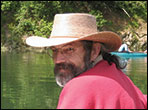 |
In Memoriam: Fred Campbell by Tom Ribbecke Fred Campbell was a fixture on the lutherie scene for decades, specializing in finish work. Many of his friends will recall that he was notably forward in his appreciation of his Scottish heritage. |
|||
 |
In Memoriam: Leo Bidne by GAL Staff Leo Bidne was great example of the restless rabble from which the GAL arose in the early 1970s. He was a curious and persistent teenager who, without instruction and with slim resources, managed to make guitars. Leo was a member of the GAL Staff in its formative days. |
|||
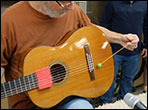 |
Trevor Gore Teaches Modal Tuning by Greg Maxwell Australian luthier Trevor Gore is the co-author of the two-volume book Contemporary Acoustic Guitar, Design and Build. Gore teaches a three-day seminar in which he demonstates his very specific and number-based method of measuring and controlling the resonant frequecies of guitars. Maxwell attended one such seminar, and gives a brief overview. |
|||
 |
It Worked for Me by Steve Dickerson, Peter Hurney, and C.F. Casey A regular old laser printer can help you quickly make a fretting template. A thoroughly hot-rodded woden clothespin becomes an evolved lining clamp. With a simple L-shaped block of scrap wood, you can easily mark the bottom of a fretboard overhang. |
|||
| Review: Guitarra Clásica Moderna — Historia, diseño y construcción by Juan Oscar Azaret This new book is a thoroughly illustrated step-by-step method for making classical guitars, using mostly inexpensive small power tools. It also takes a luthier’s look at a dozen different instruments by well-known hand-makers. Yes, it is only in Spanish. But even if you do not read Spanish, our reviewer says you will probably still get a lot out of it. The author of the book, Luis Alberto Paredes Rodriguez, is a long-time Guild member, a GAL Convention presenter, and an AL author. |
||||
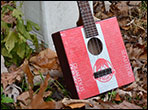 |
Questions
edited by R.M. Mottola How come my Flying Vee uke did not sound great? Can you help me improve my soundboard-planing technique? How can I get an even look when I French polish with tinted shellac? What’s the right software for modelling an archtop guitar plate for CNC? |
|||
Web Extras |
||||
| Top of Page | ||||

